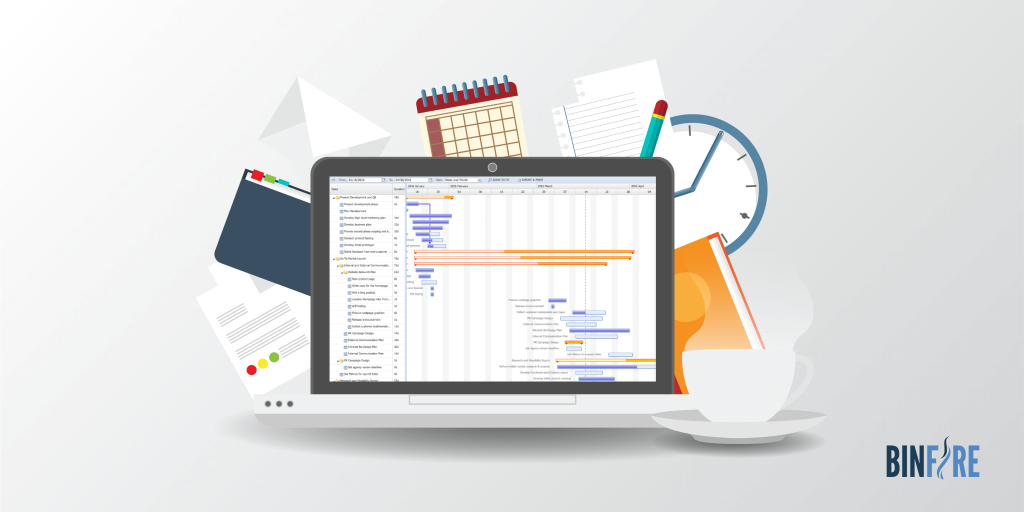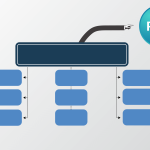Most people probably think that the Gantt Charts were developed by Microsoft. The truth is that the Gantt Chart was created by Henry Gantt in the early 1910’s and remains relatively unchanged. How is it that a tool that is over 100 years old is still in use when so many other technologies have come and gone during this era? Simply stated, the Gantt Charts remains the best way to visualize and track a project plan.

A Gantt Chart is probably the best tool to depict:
- The start and end date of each task
- Relationships and dependencies between tasks
- The relationship between planned versus actual time
- The critical path for a project
- The entire project plan at a glance
Every few years, a software company releases a new tool that is supposed to make the Gantt Chart redundant. In fact, it has become a cottage industry to predict the demise or irrelevancy of the Gantt Chart.
Below, we have listed 3 good reasons why the Gantt Chart is as useful today as it was in 1910. More to the point, I’m also going to show the enhancements to Gantt we are seeing in online project management software (sorry Microsoft).
Gantt is a Great Tool for Project Planning
Project Management newbies are mystified or even intimidated by the Gantt Chart. The assumption (or fear) is that only an experienced Project Manager with formal training can create the large number of multi-colored, overlapping and interconnected bars and lines.
To create a Gantt Chart, all you need is some paper, a pen and a steady hand. Sure software helps (and we have even created some useful Gantt Chart templates to start you off), but at the end of the day, you only need to understand three basic things to make a Gantt Chart:
- What are the basic Task in the Project Plan?
- How long does each Task take?
- Which Tasks need to be completed for another Task to begin?
If you are can answer these three questions, then it doesn’t matter if you are PMI certified or have the best online project management software in the market.
With Gantt You Can Map out Dependencies
A Project Plan is made up of a number of smaller Tasks that are typically performed by a dedicated Project Team. If resources were infinite and time was endless, we could simply list the Tasks that need to be done and assign them to skilled experts.
In the real world, everyone on the project team wears multiple hats and in order to get someone assigned to a project we need to beg, borrow or steal.
The Gantt Chart is a simple way to map out the dependencies between Tasks so that we have one view of which Tasks need to be completed in order for other Tasks to commence. For example, often a product team cannot finalize the design of a new feature until they get feedback on a product prototype from customers, or testing can’t start until a part from supplier arrives. The Gantt Chart will show that Customer Research as a dependency for Product Development and testing is dependent on part delivery by a third party.
Gantt Visualizes Project Progress for All Stakeholders
With Gantt Charts, all stakeholders who need to understand the project progress can see a clear snapshot at any given point. Your management cannot be expected to track Tasks individually and need to see the “big picture.” Team members need both the details of a project plan and also to see how their responsibilities impact the overall group. One of the most important thing that a Gantt chart does is to show when a Task is passed its deadline and how this affects the overall plan.
So what is an Interactive Gantt Chart?
Thanks to online Project Management software such as Binfire, the Gantt chart can now be “Interactive.” An Interactive Gantt Chart enables the user to change the duration of a Task directly on the Gantt Chart, thereby updating the Task List and notifying all stakeholders automatically. All changes made in Gantt by one user, are seen by other users in real-time. This simple but powerful feature upgrades the Gantt Chart from a reporting tool to an operational tool that keeps all team members up to date.
If you are interested in learning more about the Binfire Interactive Gantt Chart, please see this video:
Are you using Interactive Gantt charts for Project Management?
We’d love to hear your comments on whether Gantt Charts are an essential part of your project planning and monitoring.
And don’t forget to try Binfire for your all project management needs.




